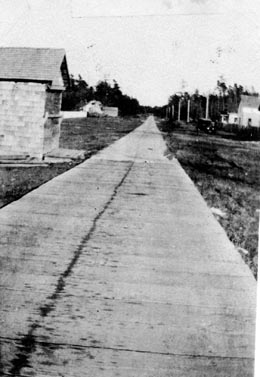On June 26, 1914, Westport is officially incorporated as town of the fourth class in Chehalis (later Grays Harbor) County. It is located in Southwestern Washington on the south shore of Grays Harbor. The town, formerly known as both Point Chehalis and Peterson, elects Lloyd Cook as mayor, but a small scandal erupts when it's alleged Cook lives outside Westport town limits. A female city council member is also elected, one of the first woman office holders to be elected in Washington after woman suffrage is passed statewide in 1910.
The little town of Westport had been steadily growing into both a marine hub and a recreation destination, which foreshadowed its eventual identity as a strong center for the fishing industry. The vote for incorporation was held on June 16, 1914, with 112 votes cast, 96 in favor of incorporation and 16 against. One of the first women elected to office in the state was voted in when Minnie Armstrong won a place on the first Westport city council. Also voted into office was mayor Lloyd Cook, but his tenure proved almost comically rocky.
After the 1914 election, members of the city council asserted that Cook lived outside the boundaries of Westport, and was thus ineligible for its mayoralty. The council went ahead and elected William Ingram, a former Aberdeen city council member, although Cook had not resigned. The council's appointment was in turn declared illegal -- which put Lloyd Cook squarely back in the mayor's office. The council then forced Cook's resignation and got what it had wanted all along: They immediately (and legally) selected Ingram for the job.
By 1920, the little town boasted a population of only 114. But it was already well on its way to becoming important for the fishing industry off Grays Harbor, which would flourish during the mid-twentieth century. As restrictions for salmon fishing were put in place due to court decisions regarding Native American fishing rights, Westport began to introduce into its economy recreational pursuits such as whale watching and surfing. By 2010 the population had reached 2,099 residents.

